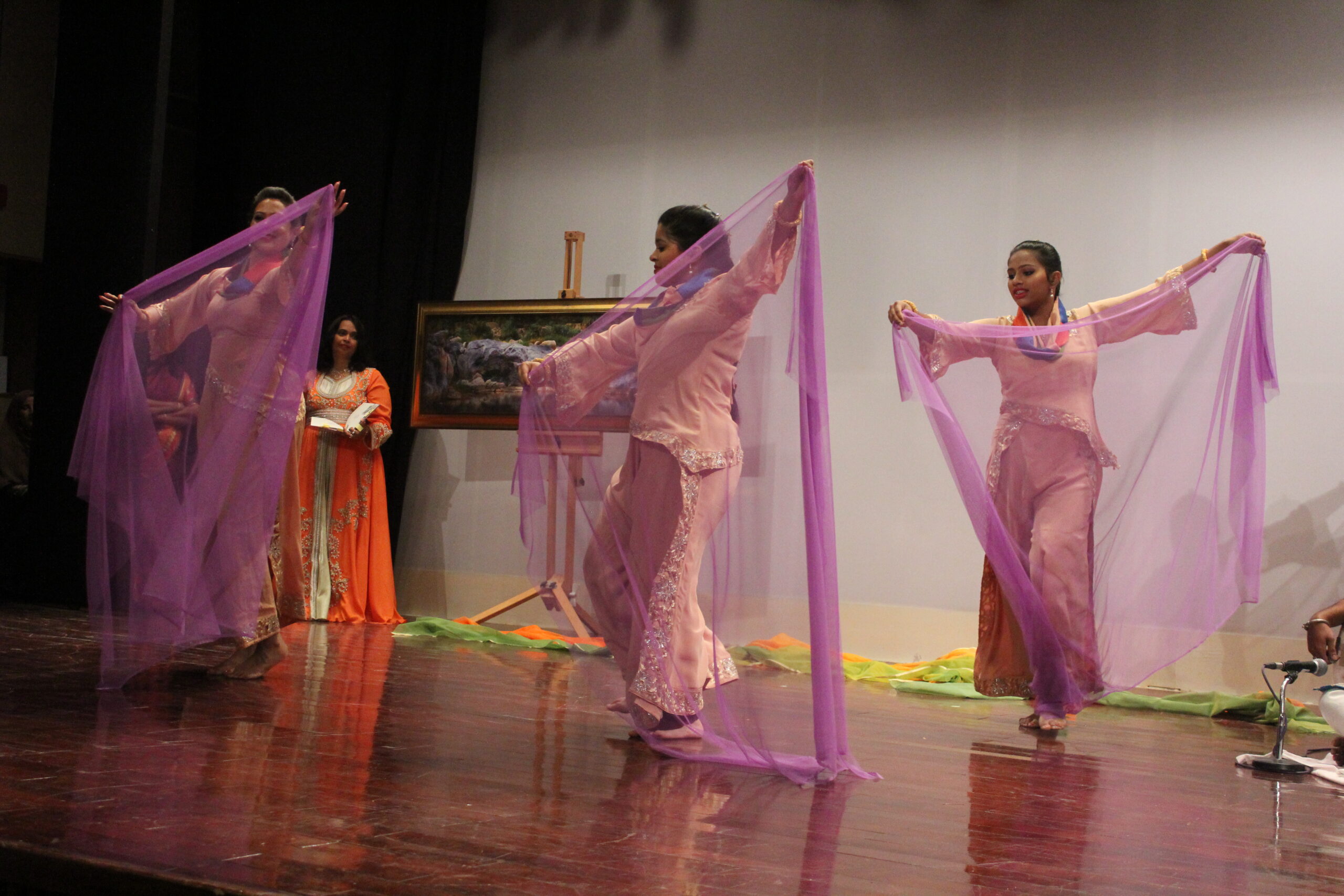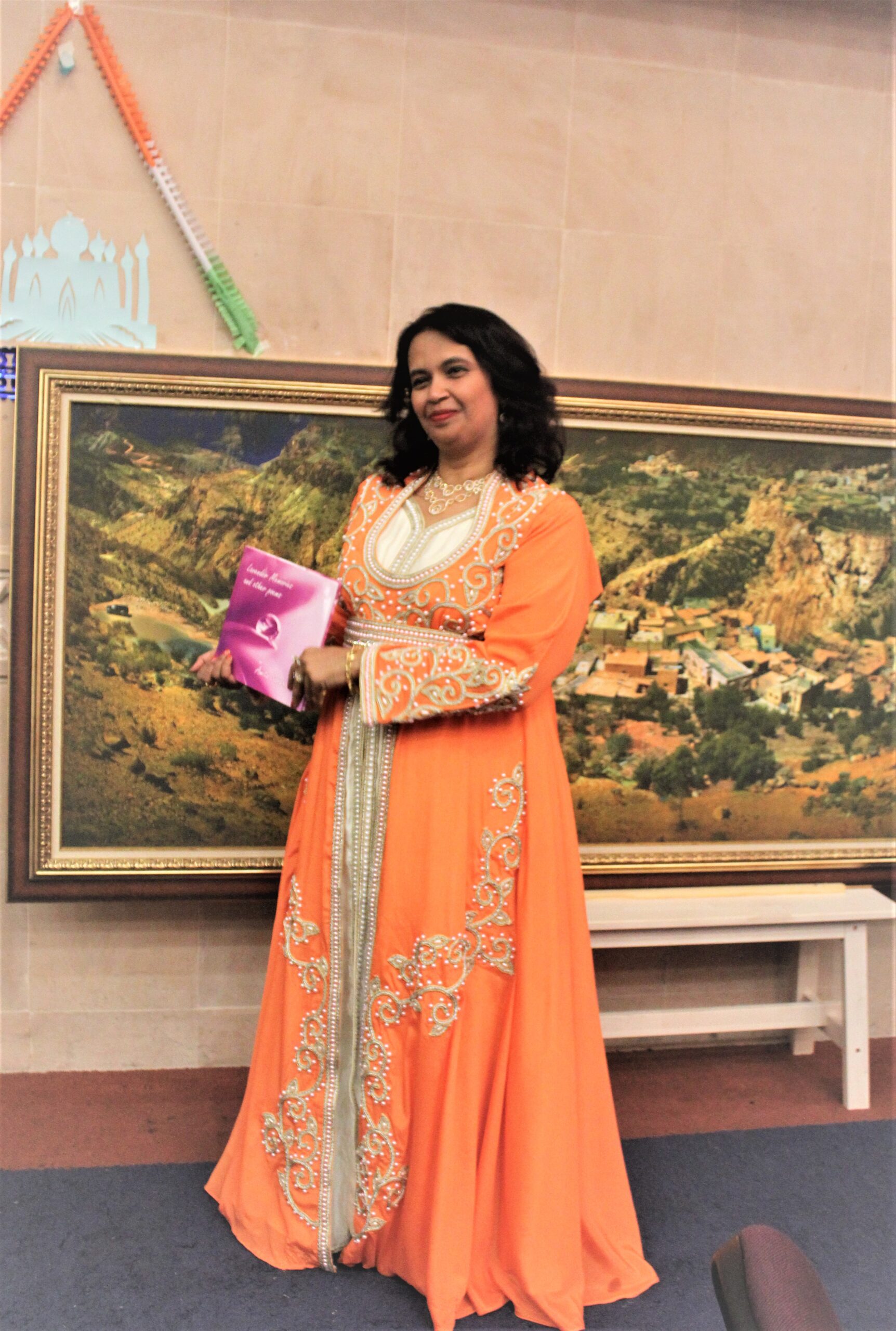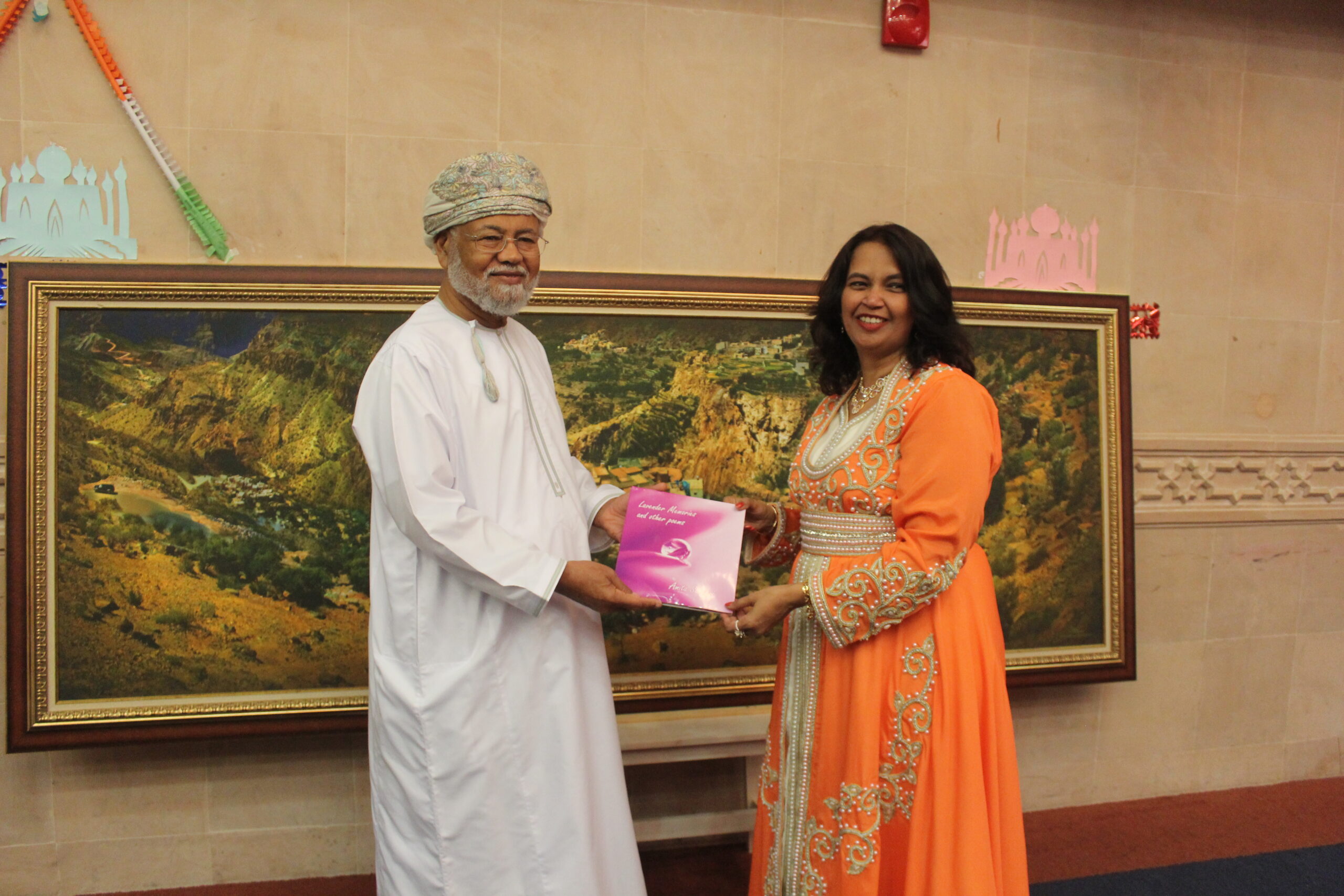More than an ode, her poems are also a tribute to Omani painter and photographer, Dr Ibrahim Al Bakri
Photos by David Solomon
Everyone or the other writes some sort of prose, one way or another. But not everyone writes poetry. It needs a different kind of an eye to look at the world. Ordinarily, our vision of things is mostly a mechanical reflection of the world and the way life goes on inside it. But poets have a special gift that allows them to get inside the mirror and look behind it to find images that no one else can see. That’s because they see what they see not with their eyes, but with their soul. It’s a kind of vision that transcends and goes far beyond normal three-dimensional perspectives.
For a lot of poets, this gift comes as naturally a breathing or perhaps blinking an eyelid. For some, it lies dormant, waiting for some catalyst to trigger that fountain of poesy so that it may gush forth from within and light up the world.

This is exactly what happened with Amita Sanghvi, a faculty member of the prestigious Sultan Qaboos University (SQU). For years and years she hadn’t even written half a line of poetry. How could she? She’d never thought about it and neither had she shown any inclination thus far. In fact, she hadn’t any inkling that she had this gift inside her, just waiting for that one unknown moment to trigger her passion and let it flow for all the world to see.
And then suddenly, it did happen, in a gush and flood of emotions.
Amita Sanghvi says “It was a magical moment when, one morning, I saw the art of Prof. Bakri. In an instant, I was spellbound. Then, in the next instant, I was writing poem after poem”.
The art in question is a collection of large-sized, oil on canvas paintings by artist and photographer Dr Ibrahim Al Bakri from the Sultan Qaboos University (SQU) and previously on the faculty of Rutgers University, USA.

Dr Bakri has extensively recreated the sweeping expanse, magnificence and beauty of Oman’s landscape. But he had no idea the avalanche of feelings his paintings could trigger off in one person. But destiny chooses its own time and players for events to play out and become a reality.
Here’s what Otherine Johnson Neisler, the Deputy Director, for the Centre for Excellence in Teaching and Learning (CETL) at the SQU had to say as a preface to her readings of her favourites from ‘Lavender Memories’ at the Indian Embassy at the inauguration of her two volumes of her poems “Lavender Memories 1 and 2.
“Amita comes over to my place one morning. As it happens, Dr. Bakri’s book of paintings and photographs is lying on my table. In one glimpse and in an instant, the magic of those images had seized her”.
In the next instant, she grabs some papers lying on my desk – actually those were some of my notes – and begins to write poems like someone possessed”.
Continuing her narrative, Otherine recounts, “Before this dramatic moment of revelation, I had no inkling that Amita writes poetry. And neither did she.”
However, what is even more incredible is that whatever Amita had written in a spontaneous outburst of emotions, was lost forever and had to be written all over again.
Dr Otherine says she transcribed her notes into her computer and threw them away, forgetting altogether about the poems written on the other side of those sheets of paper. But the muse inside the poet was strong: She was able to write her poems a second time, with a little help from her.
Before she begins her readings Amita says: “A fascinating feature of Dr Bakry’s artwork is the delicate and sensitive use of purple-lavender hues”.
“I wrote ‘Lavender Memories’ I and II in moments of appreciation for an artist whose patience enabled him to capture what few of us will ever see. He waited for those dawn moments. Those lavender moments are the fountainhead of my inspiration; my response to the visual treat of the artist”.
The novel things about this event were how singer and composer Arundhati D.Vignesh Dev Burman set a selection of Amita’s poetry to music and sang them. Accompanying her on the sarod and tabla were Nitish Purohit and Mohanish Jaju respectively. Radhika Savitri, Avasha Pillai and Sujanyaa Sriram from Premila Ramesh’s Nrityanjali/ Orbit Training Centre for Performing Arts, gave a visual interpretation of some of Amita’s poetry through their colourful dances.

Naturally, all this added that extra bit to the event. Indeed, a colourful swirl of images and words flowing, together with music and dance, produced an ecstatic gush of sentiments, emotions, expression, art, and poetry. A large gathering of distinguished guests, including senior faculty members from Sultan Qaboos University (SQU), were among the attendees at this extraordinary exposition of art-inspired poetry.
Says Amita: “It was entirely my concept of presenting art across genres from painting to poetry to songs to dance- as one form of art inspired the other”.
In conclusion, Amita says: “The beauty of the landscape of Oman is highly inspiring. Oman inspires. This peaceful nation enriched by oceans and mountains is a wonderful place for creativity to thrive”.
The last stanza of the title poem, ‘Lavender Memories and other poems’ refers to this blessed land of peace, Oman. They are as follows:
“A few rays visit
The blessed land
Reflecting serenity,
Ah My heart,
Lifts, Quietly lit”.




